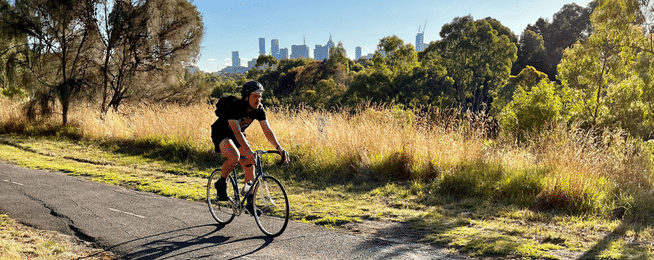The beauty of riding a bike goes beyond the boost to our health and the environment, it is also a very cost effective way to get around. Doing without a car can certainly do wonders for your disposable income, but what does the equation look like in 2023?
The types of cars people use vary wildly depending on their lifestyle and circumstances. Where a hatchback might be suitable for a single person zipping around the city, a family with 3 children might be more likely to have an SUV parked in the garage.
The costs of running these vehicles can be very different, but the RACV’s 50-year-old annual Car Running Costs Survey offers a good overview. The latest instalment reveals that costs are increasing. Rapidly.
The survey measures the costs of buying, operating and maintaining a new car, looking at base models of Australia’s best-selling cars over 5 years. It considers purchase price, loan repayments, registration and insurance costs, fuel, tyres, servicing and repairs. The calculations are based on the average distance Victorian car owners travel each year – 15,000 km.
The cheapest light car to own and run according to the 2022 survey is the MG3 Core Hatch, at $735 per month. That same car was found to be the cheapest in the 2021 survey, but with a monthly ownership cost of $627. That’s a leap of more than $100 per month in just 12 months.
The cheapest large SUV to own and run is the Subaru Outback, at $1415 a month, increasing significantly from $1225 in 2021. The cost of running the cheapest medium car, the Toyota Ascent, has jumped to $1123, from $1004.
The RACV survey is based on the costs of buying and operating a new car, and buying a used car can be cheaper.
New cars usually have a higher sticker price, but they can also save the buyer money in the near-term through a warranty, capped service pricing and cheaper insurance and repairs.
How do these numbers stack up alongside the costs of buying and operating a bike?
Like cars, bikes come in all shapes, sizes and wildly varying prices. You may well find one in a friend’s shed for free, but let’s say we’re going to treat ourselves and shell out $1000 on a decent commuter. Other upfront costs will include a good helmet for $100, a good D-lock for $100, a pump for $50 and some bright lights for $100.
Let’s say our properly maintained $1000 commuter bike lasts us 10 years, costing us $100 a year in depreciation. Let’s assume the items listed above need replacing every two years, adding $175 to our annual bicycle operating costs.
Other ongoing expenses will include regular servicing and replacement parts, and some comfortable and visible bike riding gear such as shorts, gloves, a jacket and a neck warmer (hello Melbourne winter). Let’s allow $800 a year to ensure our bike and our bodies are properly cared for.
As a ballpark figure, that puts the costs of operating a bicycle for a typical commuter at $1075 each year. In comparison, the , RACV survey says the MG3 Core Hatch, costs $8820 a year.
That’s a saving of at least $7000 year, which could be placed in a high-interest savings account, put towards a mortgage, or a hard-earned holiday. Or perhaps you’d like to just buy another bike for fun.

Family life, where we live and work, sporting commitments and caring responsibilities can all be determining factors in whether or not folks can do without a car. But the numbers reveal that for those that do, there are massive savings to be made.
For many, owning both will be the most suitable arrangement. While there’s no getting around things like registration and insurance, each time you wheel the bike out of the driveway instead of the car, there is more tread left on the tyres, more fuel in the tank, and more pennies in your pocket.
Become our friend
Find out more about Bicycle Network and support us in making it easier for people to ride bikes.


